History of Aviation in Grand Prairie

1929-1940
In 1929, the cattle and farming community of Grand Prairie, population 1,529, welcomed the Curtiss-Wright Airport of Fort Worth-Dallas. The airport was located at Jefferson Street and Carrier Parkway and was one of several civil airports built and operated by the Curtiss-Wright Company across the country. After Curtiss-Wright operated a flight school at the field for a year, it then became the city’s Municipal Airport. In 1940, the field was purchased by the Lou Foote Flying School for military cadets. In 1942, the Navy took over the property, establishing the Grand Prairie Naval Landing Field, also known as Squadron Two.
Just southeast of Curtiss-Wright, Hensley Army Air Force Base opened in 1932. Although technically in Dallas, the base (which in 1943 was renamed Dallas Naval Air Station) would forever change Grand Prairie. In 1939, North American Aviation, an industry giant, chose a site west of Hensley Field for its new production plant.
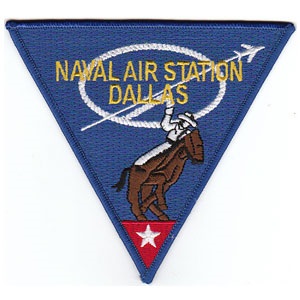
On Sept. 28, 1940, North American broke ground on the new plant. North American’s plant was constructed of concrete and steel and was the first windowless, fully air-conditioned and artificially lit aircraft production facility in the U.S. The plant was dedicated on April 7, 1941.
In addition to construction of the plant itself, housing had to be made available for the thousands of people that would be moving to the area to work at the plant. At the time, Grand Prairie was a town of only 1,595. In order to help meet the housing demand, the federal government built Avion Village, a $1 million housing development of 300 homes in Grand Prairie. One house in the project was built from scratch on a prelaid foundation in an incredible 58 minutes and 50 seconds.
WWII 1941-1945
On December 7, 1941, Japan attacked Pearl Harbor and the United States went to war.
It was during World War II that the term “Air Hog” was born. The term referred to pilots who were so dedicated to aviation it was said that they “lived to fly.” During WWII, 2,400 dwellings were built in Grand Prairie and 20,000 aircraft rolled from North American’s assembly lines. These aircraft included the AT-6 Texan and P-51 Mustang, one of WWII’s fastest (430 mph) and most important fighters. In one 30-day period, 728 aircraft were produced – a mark never bettered in the U.S. before or since. At the peak of production in April 1944, more than 38,500 employees were working three 8-hour shifts – 24 hours a day.
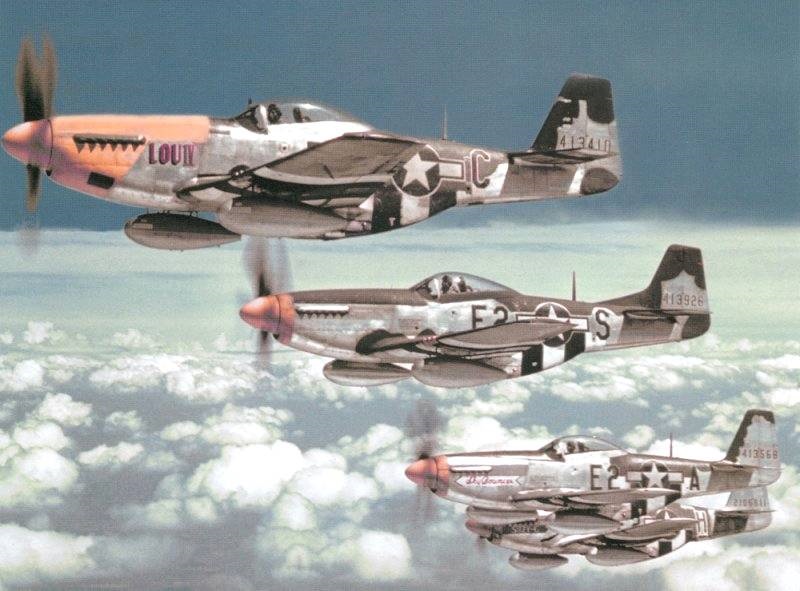
By the war’s end in 1945, employment had dropped to 15,000, all of whom lost their jobs on Aug. 14, 1945 when the government cancelled its contracts for war planes. North American returned the Grand Prairie facility to the government, which immediately began the task of finding a tenant.
Post War Era 1946-1960
Two former North American executives leased part of the vacant facility and created Texas Engineering and Manufacturing Company (Temco). By late 1946, the company employed 2,500.
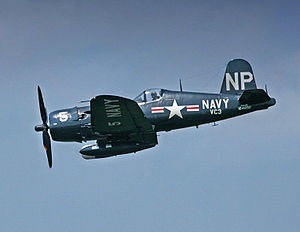
About the same time, Chance Vought Aviation, a producer of 13,000 navy aircraft and missiles during WWII, began searching for a new home for its Connecticut facility. On April 8, 1948, Vought subleased space from Temco. By late 1949, the company had moved 1,300 people and 27 million pounds of machinery the 1,687 miles from Connecticut to Grand Prairie.
With the onset of the Korean War in 1950, Vought's production centered on the F4U Corsair fighter. These birds were so successful that the Marines had Vought design a version, the AU-1, specifically for air-to-ground support. Corsairs were followed by the successful F8U Crusader jet in 1955.
Vought's landlord, Temco remained viable through subcontracting into the late 1950s. In July 1960, Temco merged with James Ling, an electronics firm.
Vietnam Era 1961-1979
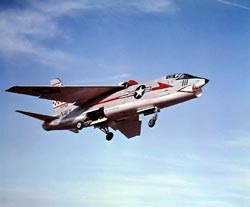
By 1962, the Navy had vacated the Curtiss-Wright airport and it reverted back to use as a municipal airport. In early 1969, the City of Grand Prairie built a new airport four miles to the southwest to accommodate longer runways for jets. In 1976, the old Curtiss-Wright airport was sold, torn down and the area redeveloped.
In 1963, Temco-Ling merged with its larger and more successful tenant, Vought, creating the LTV Corporation. LTV focused on the highly successful Corsair and Crusader. The Crusader became its high-water mark and one of the great navy jet fighters of all time. The aircraft set a Los Angeles to New York speed record with young Major John Glenn at the controls. Capable of Mach 2, yet docile enough to land on an aircraft carrier, the Crusader had the highest kill ratio of any U.S. Navy aircraft in the Vietnam War.
In 1967, LTV’s missile division, today’s Lockheed Martin Missiles and Fire Control, moved into its own building at its current location at West Freeway Street and Marshall Drive.
In 1973, Bell Helicopter, the first company in the nation to obtain certification for a commercial helicopter, built a facility in Grand Prairie to manufacture aerospace, aircraft and drive systems.
End of Century 1980-1999
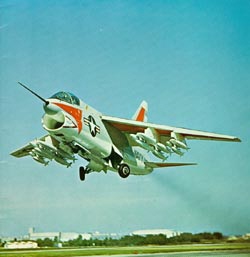
LTV produced its Corsair into the late 1980s. The Corsair A-7 carried weapon loads of 20,000 pounds, boasted a low combat loss rate of 0.04% and delivered weapons so accurately that ground commanders asked for it by name. The Corsair supported troops in Vietnam, and served in Desert Storm (1990-91) without a single loss.
In 1991, LTV sold to Northrop Aviation, and became Vought Systems of Northrop-Grumman. Its neighbor, Dallas Naval Air Station closed in 1993.
Loral Corporation bought LTV’s missile division in 1992. Lockheed Martin then acquired the business from Loral in 1996. Today, Lockheed Martin Missiles and Fire Control’s 2,700 employees are pioneers in the field of research, development and production of high-performance missile and rocket technology.
Another aviation pioneer, Aerospatiale Helicopter Corporation opened its Grand Prairie facility in 1980 at the city’s airport. It changed its name to American Eurocopter in 1992. The facility’s 430 employees build state-of-the-art helicopters for individuals, corporations and governments. On February 1, 2014, American Eurocopter changed its name to Airbus Helicopters Inc., more clearly unifying its brand under its parent corporation Airbus.
New Millennium - 2000 and Beyond
In 2001, the Carlyle Group purchased Vought Systems of Northrop-Grumman and renamed it Vought Aircraft Industries. In the 2000s, Vought diversified and now specializes in defense, commercial airlines, electronics, materials and flight simulations. Able to build every part of an aircraft, nearly all major commercial aircraft projects in development today include Vought as a team member.
Other leading aviation companies in Grand Prairie include Turbomeca, manufacturer of microjets for jets and helicopters, and Sagem, which manufactures and installs avionics systems in business jets and helicopters. Control Products, established in 1963 and a major subcontractor of Vought, manufactures lighting equipment, switchgear apparatus, search and navigation systems and process control instruments. Texstar manufactures canopies for F-16s and tail sections for the new very light jets. A number of other aviation related companies that build baggage handling systems, airline seats and helicopter rotor blades also call Grand Prairie home.
Grand Prairie’s place in the history of American aviation is rich and well-established. And with its growing family of aviation and aerospace companies, the city will continue to be a leader in defense, aerospace and emerging technologies into the future.